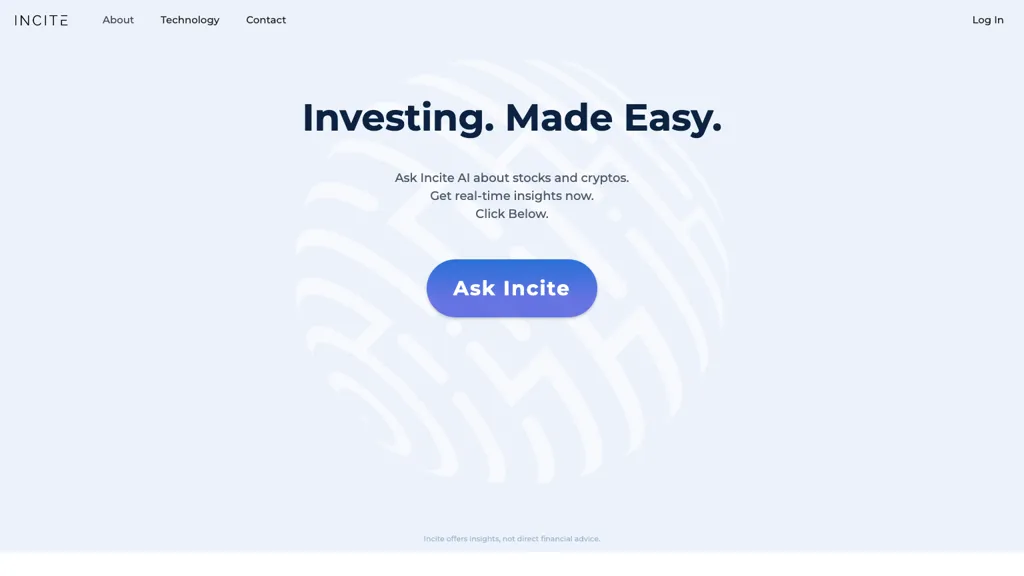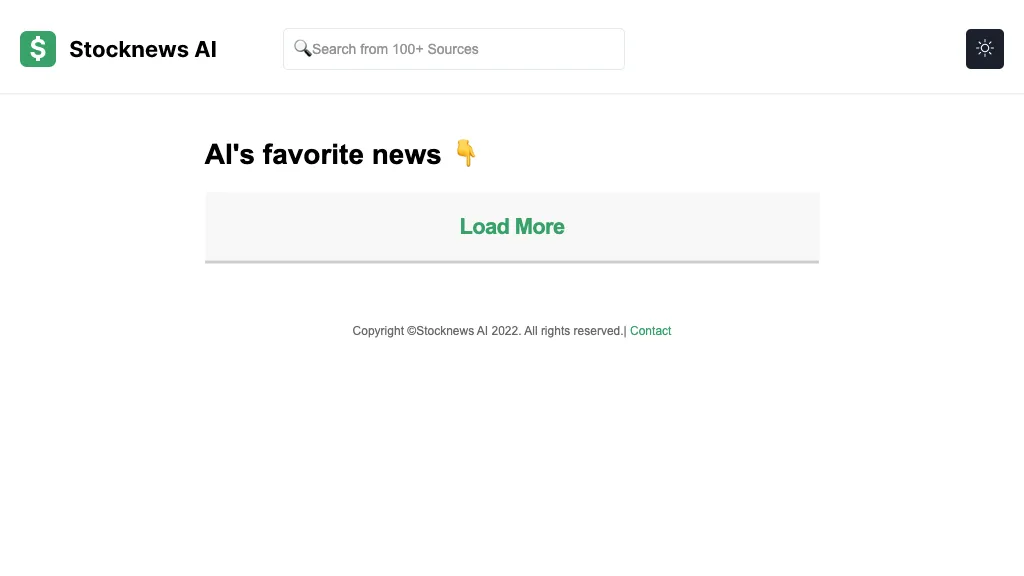20 New Info To Selecting AI Stock Trading Platform Websites
20 New Info To Selecting AI Stock Trading Platform Websites
Blog Article
Top 10 Suggestions For Evaluating Ai And Machine Learning Models Used By Ai Platforms For Analyzing And Predicting Trading Stocks.
The AI and machine (ML) model employed by stock trading platforms as well as prediction platforms should be evaluated to make sure that the information they provide are accurate trustworthy, useful, and applicable. Models that are poorly designed or overhyped could result in inaccurate forecasts as well as financial loss. Here are ten of the most useful strategies to help you assess the AI/ML models of these platforms.
1. Know the reason behind the model as well as its approach
A clear objective: Determine if the model was designed for short-term trades as well as long-term investments. Also, it is a good tool for sentiment analysis or risk management.
Algorithm transparency: See if the platform discloses the types of algorithms used (e.g., regression or neural networks, decision trees or reinforcement learning).
Customizability - Determine whether you can modify the model to meet your investment strategy and risk tolerance.
2. Perform an analysis of the model's performance indicators
Accuracy: Check the accuracy of the model in forecasting future events. However, do not solely depend on this measurement as it may be misleading when used in conjunction with financial markets.
Recall and precision (or accuracy) Find out the extent to which your model can distinguish between true positives - e.g. precisely predicted price changes - as well as false positives.
Risk-adjusted gain: See whether the forecasts of the model result in profitable transactions, after taking into account risk.
3. Check the model by Backtesting it
The backtesting of the model using historical data allows you to test its performance against prior market conditions.
Testing using data that isn't the sample is crucial to prevent overfitting.
Analyzing scenarios: Examine the model's performance under different market conditions.
4. Check for Overfitting
Signals that are overfitting: Search models that do exceptionally well on data training, but not so well on data unseen.
Regularization Techniques: Examine to determine if your system is using techniques such as regularization of L1/L2 or dropout to avoid overfitting.
Cross-validation. Ensure the platform performs cross validation to test the generalizability of the model.
5. Examine Feature Engineering
Look for features that are relevant.
Make sure to select features with care: The platform should only contain data that is statistically significant and not redundant or irrelevant ones.
Updates of dynamic features: Make sure your model is updated to reflect new characteristics and current market conditions.
6. Evaluate Model Explainability
Interpretation: Make sure the model has clear explanations of its predictions (e.g. SHAP values, importance of features).
Black-box models: Be wary of applications that utilize overly complicated models (e.g., deep neural networks) with no explainability tools.
User-friendly insight: Determine if the platform can provide useful insight to traders in a way that they understand.
7. Examine the adaptability of your model
Changes in the market: Check that the model is able to adjust to changing market conditions (e.g. changes in regulations, economic shifts or black swan occasions).
Continuous learning: Determine if the platform continuously updates the model with new data. This could improve the performance.
Feedback loops. Be sure your model is incorporating the feedback from users and real-world scenarios in order to improve.
8. Be sure to look for Bias and Fairness
Data bias: Verify that the data regarding training are representative of the market and that they are not biased (e.g. excessive representation in certain time periods or sectors).
Model bias: Find out if you can actively monitor and mitigate biases that are present in the predictions of the model.
Fairness: Ensure that the model does not disproportionately favor or disadvantage particular stocks, sectors or trading styles.
9. Calculate Computational Efficient
Speed: Determine whether the model can make predictions in real-time or with minimal latency, especially for high-frequency trading.
Scalability: Verify whether the platform is able to handle large datasets and multiple users without affecting performance.
Utilization of resources: Check if the model is optimized in order to utilize computational resources effectively (e.g. GPU/TPU).
10. Transparency in Review and Accountability
Model documentation: Make sure that the platform offers detailed documentation regarding the model structure, its training process as well as its drawbacks.
Third-party validation: Find out if the model was independently verified or audited by a third party.
Error handling: Check if the platform has mechanisms to detect and fix model errors or failures.
Bonus Tips
Case studies and reviews of users Review feedback from users as well as case studies in order to evaluate the model's real-world performance.
Trial period - Use the demo or trial for free to try out the model and its predictions.
Customer support: Check that the platform provides robust customer support to help solve any product-related or technical issues.
Following these tips can aid in evaluating the AI models and ML models available on stock prediction platforms. You'll be able to assess whether they are trustworthy and reliable. They should also align with your trading objectives. Follow the recommended get the facts on ai for trading for site tips including ai for stock trading, ai investing, ai stock trading, market ai, investing ai, investment ai, market ai, best ai stock trading bot free, best ai for trading, best ai trading app and more.
Top 10 Tips To Assess The Regulatory Compliance Of Ai Stock Predicting/Analyzing Trading Platform
The compliance with regulatory requirements of trading platforms that employ AI to predict/analyze the price of stocks is a significant aspect. Compliance can help ensure that the platform operates within the legal frameworks and safeguarding user data. Here are the 10 best suggestions for evaluating the regulatory compliance of such platforms:
1. Check your license and registration
The regulatory bodies should ensure that your platform is registered with and licensed by appropriate financial regulatory authorities (e.g., SEC in the U.S., FCA in the UK, ASIC in Australia).
Verify the broker collaboration If your platform is integrated with brokers or brokers, be sure they are licensed and regulated.
Public records: Search the regulator's site to determine whether the platform is registered or if it has ever violated the law.
2. Examine Data Privacy Compliance
GDPR: Make sure that your website adheres to the General Data Protection Regulation.
CCPA -- California Consumer Privacy Act: Verify compliance of California users.
Policies on handling data: Go through the policy on data privacy of the platform to determine the ways in which user data is gathered, stored, and transferred.
3. Evaluation of Anti-Money Laundering/AML measures
AML policies - Make sure that the platform's AML policies are effective and effective in detecting, prevent and detect money laundering.
KYC Procedures: Verify whether the platform has procedures in place to confirm the identity of users.
Transaction monitoring: Check whether the platform is monitoring transactions for suspicious activities, and then reports it to the appropriate authorities.
4. Make sure that you are in Compliance to Trading Regulations
Market manipulation: Make sure the platform is equipped with measures to stop market manipulation like spoofing or wash trading.
Types of orders. Check that the platform complies with the regulations pertaining to order types (e.g. there's no stop loss hunting that is illegal).
Best execution: Ensure that the platform is following best execution practices to ensure trades are executed at the highest price.
5. Cybersecurity Assessment
Data encryption: Ensure that the platform has encryption in place to protect the data of users in transit and at rest.
Incident response. Verify whether the platform is equipped with a plan of action for handling cyberattacks and data breaches.
Certifications - Find out if your platform has any cybersecurity certifications.
6. Transparency as well as Disclosure and Evaluation
Fee disclosure - Make sure all fees are clearly revealed, including additional or hidden charges.
Risk disclosure: Make sure that the platform has clear risk disclosures, specifically for leveraged or high-risk trading strategies.
Performance reporting: Ensure that the platform is transparent and accurate reports regarding its AI models.
7. Verify compliance with International Regulations
Trading cross-border If you are planning to trade internationally, make sure the platform is compliant in all jurisdictions.
Tax reporting: Find out the platform's tools or reports for users to comply with tax regulations.
Check for compliance with sanctions. Verify that the platform follows sanctions and is not allowing transactions or trading with banned entities or countries.
8. Review Audit Trails and Record-Keeping
Transaction records: Make sure that the platform maintains complete records for purposes of regulation and for audit.
Recordings of user activity: Check whether the platform records user activity including logins or trades, as well as any changes in account settings.
Audit readiness: Determine if the platform can provide necessary documents and logs in the event of a regulatory audit.
9. Evaluation of Compliance AI Specific Regulations
Algorithmic rules of trading: If the platform permits algorithmic trading, it has to be in compliance with European regulations, such as MiFID II and U.S. Reg SCI.
Fairness and Bias: Ensure that the platform monitors biases and minimizes them in its AI models to guarantee fair trade.
Explainability. Certain regulations may require the platform to explain AI-driven prediction and decisions.
10. Review Feedback from Users and Regulatory History
User reviews: Check out the feedback of users and compare it to the platform's regulatory standards.
Check the history of regulatory compliance to determine whether there have been any violations to the rules of regulation that were committed, as well as penalties and fines.
Third-party auditors: Check if the platform is regularly audited by a third party to ensure it's adhering to the rules.
Bonus Tips
Legal consultation: Think about consulting an expert in law to assess the platform's compliance with pertinent laws.
Trial period for free: You can avail a demo or a free trial to try out the compliance features of the platform as well as its documentation.
Customer Support: Verify that the platform offers customer support for any queries or issues with compliance.
Use these guidelines to assess the regulatory compliance and security of your interests. Compliance does not just help reduce legal risks, but can also increase trust with the platform. Have a look at the recommended for beginners for can ai predict stock market for website recommendations including ai stock prediction, ai stock investing, ai investment tools, best ai for stock trading, how to use ai for stock trading, best ai stocks to buy now, best stock prediction website, ai trading tool, ai for trading stocks, best ai stocks to buy now and more.